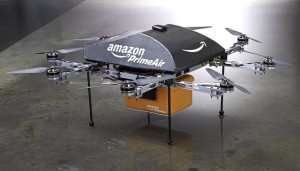by Tatyanna Morales
———————————–
 We have all encountered that moment when someone asks “What did you get me?” and you are empty handed. Your palms start sweating and your mind races off. You quickly think of something you can give them. You can either start to look through your pockets which contain five dollars, a bracelet your other half gave you for your anniversary; or reluctantly, you can choose to tell them you forgot to get them a gift instead. Amazon now has a solution to that problem.
We have all encountered that moment when someone asks “What did you get me?” and you are empty handed. Your palms start sweating and your mind races off. You quickly think of something you can give them. You can either start to look through your pockets which contain five dollars, a bracelet your other half gave you for your anniversary; or reluctantly, you can choose to tell them you forgot to get them a gift instead. Amazon now has a solution to that problem.
Amazon.com now has a solution to that problem. Thinking futuristically, Amazon has created a drone which will drop off your package in thirty minutes or less. However, the actual introduction of this drone might not take place any time soon and may cause many problems yet to be foreseen.
Prime Air, mostly known as the drone system, has been the talk of the moment, appearing all over twitter, books, magazines and the news. A drone, which in my opinion, looks like the top of a BBQ grill with eight legs each with helicopter wings, will be able to carry 5lbs or less to your doorstep in 30 minutes or less.
You may be wondering, how is this even possible? Is this a good idea? Well, the way this may work is while the UPS delivery worker delivers a heavier package, the same worker will send multiple drones out of his truck to deliver the smaller packages, making delivery faster. I used the word “may” and not “will” because Prime Air is still being tested to make sure Amazon will have a solution when the drone encounters technical difficulties. Also, The Federal Aviation Administration still needs to sign off on Amazon’s flight plans, although the drones could be limited to a lower altitude that avoids FAA issues.
Optimistic as they are, Amazon says Prime Air may be taking the parcels skyward in 5 to 6 years. On the other hand, the process of making this advanced technological device and system, may take even a decade or so. 10 years is a very long time. One can graduate high school and college in those years, so why make it public now? From research, Amazon buyers have increased since their first Prime Air commercial, which aired the night before cyber Monday. Everyone who knows about Prime Air is curious about Amazon’s new, extraordinary method of package delivery. This publicity is just what they needed to get the stock price back up! But publicity is not always a positive thing because it sparks controversy.
Some people spent hours examining the feasibility of such a plan and earnestly pondering the effects of weather, thieves and other factors. For example, what will happen when residents in an apartment building order from a drone pick up? Most likely they won’t be able to enjoy the luxury of the drone drop off and will have to use the normal UPS service or Fed Ex. Now think politically. Let’s say a nation who has a grudge against the U.S discovers a way to create a massively destructive bomb disguised as a Prime Air drone. This drone then is not as harmless as a stork dropping off a new baby boy.
Many things can go wrong with this technology. What if someone captures the drone, dismantles it accessing confidential information to be used in malicious ways? Or what if someone captures the drone dismantles it and builds something entirely different and uses it in pernicious schemes as well. There may be many more complications along with other questions you may have. The list of potential hazards may be endless but it’s also possible that there will never be a drone system.
When approaching a new idea, one needs to think outside the box and have a broad perspective in order to take into consideration all of the positive and negative effects that may come with the idea. Deliveries within “30 minutes or less”, (which may have been inspired by an old Domino Pizza delivery commercial) sounds amazing, right? You could do some last minute Christmas shopping or stall your sibling for 30 minutes on their birthday until their package/gift comes in.
But what about the other harmful or questionable factors? Learn as much as you can about a new product or invention because, despite expected benefits, it can also have its drawbacks.